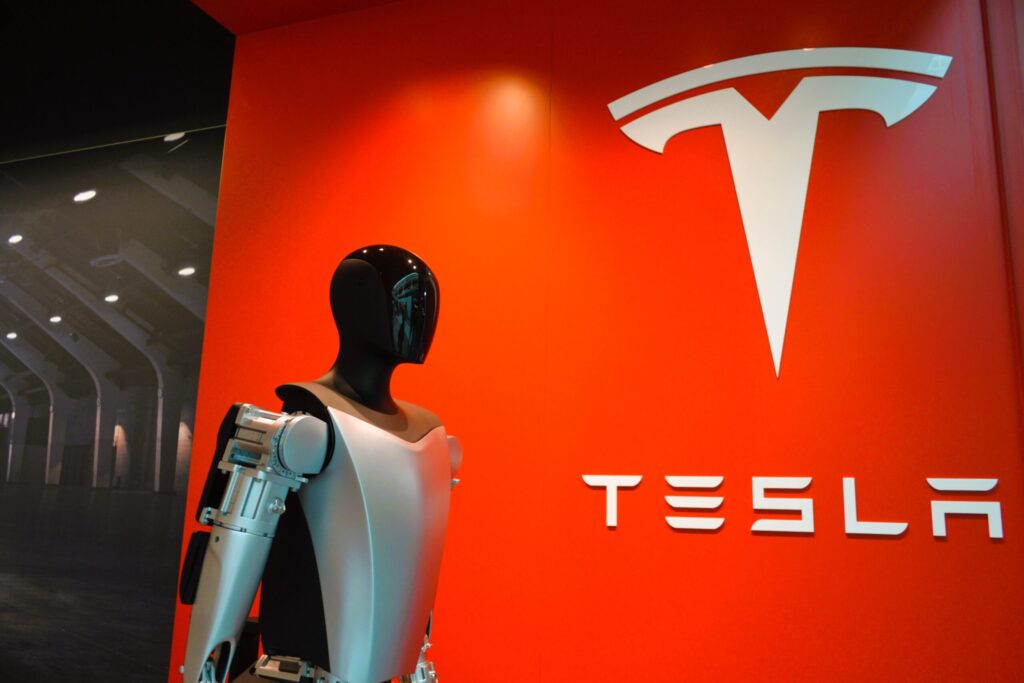Tesla (TSLA) has announced a delay in the production of its much anticipated Optimus robot, a humanoid designed to revolutionize labor and automation. CEO Elon Musk, during the company’s Q2 earnings call, admitted to facing significant technical and managerial roadblocks, shifting production of the Optimus 3 model to early 2026. While the short term outlook appears uncertain, Musk remains optimistic, targeting 100,000 units per month by 2030. This article explores the hurdles Tesla faces, expert analyses, and what this means for the broader AI and robotics industry.
The Promise and Problems of Tesla’s Optimus Robot
The Optimus robot was originally envisioned as a next generation workforce capable of handling repetitive or dangerous tasks in manufacturing, logistics, and even homes. Musk has previously suggested that Optimus could eventually outpace Tesla’s automotive division in economic value. However, reality is proving more complex.
Hardware flaws have forced Tesla to halt production temporarily. Overheating joint motors and underperforming batteries are just the beginning. Perhaps most critical is the robot’s lack of dexterous hand function, which has made it unreliable in real world tasks. These design issues not only impact usability but also raise safety concerns.
Dr. Alice Munro, a robotics engineer at Stanford, commented, Tesla is attempting something incredibly difficult. Human like mobility and functionality require sophisticated actuators and control systems. Their current setbacks are not surprising for a project of this scale.
The Leadership Vacuum and Its Impact
In addition to technical obstacles, internal leadership shakeups have reportedly contributed to the delay. According to a former Tesla engineer who requested anonymity, there has been frequent turnover in the robotics leadership team, leading to inconsistent strategies and vision.
Boston Dynamics, a leader in humanoid robotics, took over a decade of focused R&D under consistent leadership to develop Atlas, its advanced humanoid robot. Their approach contrasts with Tesla’s faster, more aggressive timeline. Boston Dynamics’ methodical progress highlights the need for organizational stability, something Tesla appears to lack in this area.
These leadership issues have delayed vital testing protocols, affected supplier relationships, and demotivated teams working on the Optimus project.
Material Science and Supplier Bottlenecks
Tesla’s ambition to make the Optimus robot mass producible requires not only innovation but also scalability. One major hurdle is the search for lightweight yet durable materials for joints and exteriors. Current components have been wearing out rapidly under continuous use.
Additionally, Tesla is now collaborating with multiple third party suppliers to develop custom hardware parts a departure from its earlier strategy of in house design. This shift has caused logistical friction, resulting in parts shortages and testing delays.
Dr. Karim Bashir, a supply chain strategist, notes, The robot industry lacks mature, high volume suppliers for many of the specialized parts Tesla needs. Their pivot to multiple vendors is wise but will take time to stabilize.
Realistic vs. Aspirational Timelines
Elon Musk’s revised projection for production early 2026 for the Optimus 3 model and 100,000 units monthly by 2030 is more grounded than earlier claims but still ambitious. Many in the robotics community view these numbers skeptically.
Sarah Collins, an automation engineer who worked on early robotics at Amazon, shared, Even simple robotic arms can take years to reach production stability. A full humanoid robot that functions safely and reliably in the real world? That’s a whole different challenge.
For Musk, setting bold targets is a leadership signature but the timeline now seems more like a motivational benchmark than a guaranteed milestone.
What This Means for the Future of Humanoid Robotics
Despite the delay, Tesla’s commitment to the Optimus robot signals a long-term bet on automation. While setbacks may dent short term investor confidence, the broader robotics industry can benefit from Tesla’s high profile pursuit.
The company’s high visibility and aggressive goals push suppliers, developers, and even competitors to innovate faster. The increased focus on humanoid robots may bring new funding and collaboration opportunities to the field.
Innovation Requires Endurance
Tesla’s delay in the Optimus robot is a stark reminder that technological revolution doesn’t follow a straight path. Challenges with overheating motors, weak hands, and fragile batteries are more than technical they’re strategic roadblocks. Combined with leadership flux, they offer a cautionary tale about the complexity of scaling innovation.
However! with dedicated focus, supplier diversification, and leadership realignment, Tesla still has the potential to reshape how we think about robotic labor. Whether they meet the 2030 goal or not, the journey of the Optimus robot will undoubtedly influence the direction of global robotics for years to come.

